Fleet Books H-Z
Click here to contribute a review
|
Glyn Kraemer Johnson & John Bishop
ISBN
0-7110-3206-4 – 247mm x 190mm – 80 pages – Hardback
“For
me two of the finest photos in this book are of vehicles in
active service and taken from a remarkably similar viewpoint.
The first shows GFN 908, a unique 1952 Guy-bodied Guy Arab IV,
on route 66 bound for Deal closely followed by a YJG registered
1962 AEC Regent V on route 13A from Canterbury to the same
destination. With the camera at bus roof level the view is so
unlike the majority of eye level shots which abound in the book.
The superb sharpness of the picture is probably due to the
traffic being in a queue waiting for the Sandwich level crossing
gates to open. The second photo is a high speed action shot of
HJG 27, a Dennis UF/Duple Ambassador centre-entrance coach
speeding towards the coast and Dover on the newly-opened M2
Motorway. This time the viewpoint is from a high level and the
sharpness is remarkable given that these coaches had an
extremely good turn of speed. MH
Published in 2007 by Ian Allan |
|
Glyn Kraemer Johnson & John Bishop
ISBN
0-7110-2919-9 – 247mm x 190mm – 80 pages – Hardback “Those of you familiar with the Heyday series will be familiar with the layout of the book, a brief introduction to the subject followed by a superb set of illustrations. This book is no exception to that rule and follows that tried and trusted format. As the book is totally in colour. the “Heyday of Southdown” is taken from the end of World War II through BET and NBC days to privatisation and the subsequent takeover by Stagecoach in 1989. The illustrations are generally excellent especially considering that some date back to the 50s. As you would expect, the Queen Mary’s are well represented in the photographs but thankfully not to the exclusion of many other Southdown vehicles. Model collectors will, of course, recognise many of the vehicles that have been represented by the die-cast manufacturers. I found the pictures of the coaching fleet particularly interesting with many unusual body types being shown. If you’re a Southdown fan this book is a must.” BJK
Published in 2003 by Ian Allan |
|
Malcolm R. White
ISBN
0-9532485-9-3 - 255mm x 210mm - 104 pages – Paperback "Having spent many years of my life living near Lowestoft I have always wanted to see a history of Lowestoft Corporation Transport published. In 2003 Malcolm White made my wish come true and I was not disappointed. It is a fascinating history of one of the smallest bus companies in the UK. The Company ran mainly GUY and AEC buses. Some with unique locally built United/ECW bodies, it wasn’t until 1965 that Lowestoft bought Leyland buses and quickly returned to AEC as their final purchases before selling out to Eastern Counties in 1977. This is a refreshing change from history of the large companies and the book is packed with information and pictures of the company from it’s inception to closure." BJK
Published in
2003 by
Coastal Publications |
|
Stuart Bell
|
|
Kevin Lane
ISBN 0-7110-3023-5 – 222mm x 286mm – 96 pages
– Hardback "The National Bus Company came into being on 1st January 1969 and was officially dissolved on 1st April 1991. This book covers the first 7 years of the company from 1969 to 1975/1976. The introduction provides an excellent potted history of the predecessors to the company and developments within the early years. The book then has a chapter on each of the bus companies that were merged to form this huge company providing illustrations of the buses and coaches operated by that company. The pictures are well chosen and the text is detailed and informative providing excellent detail on the vehicles shown. The wide variety of bus and coach types and variants never ceases to amaze me and every time I pick up the book I discover another treasure. There is something in this book for everyone, whether you favour East Kent or Cumberland or something in between, even London is catered for in the London Country Chapter." BJK
Published in 2004 by Ian Allan |
|
Kevin Lane
ISBN 0-7110-3140-1 – 222mm x 286mm – 96 pages
– Hardback "In this, the second part of his history of the National Bus Company, Kevin Lane looks at the lead up to the privatisation of the business in the mid-1980s. The first volume took the story from the Companies inception in 1969 to the mid 1970s; this volume continues the story until the last subsidiary was privatised in 1988. Many of us remember the National Bus Company for their mainly poppy red and leaf green liveries and for the Bristol/ECW combination of their buses, this book clearly illustrates that there was a lot more to the Company than that and there was indeed a large variety of liveries and vehicles, particularly in the latter years and especially in the large numbers of coaches operated. It was the election of the Margaret Thatcher Government in 1979 with their privatisation plans that led to the sale and break up of NBC; this was achieved in just over eight years. In the late 1970s NBC had standardised on the Leyland National for single deck vehicles and the Bristol VR and Leyland Atlanteans, and later Leyland Olympians, for double decks, although a few half-cabs, mainly Lodekkas clung on with a few operators. Each of the NBC subsidiaries is covered in alphabetical order from Alder Valley to Yorkshire Traction, including sections on the National Travel subsidiaries and London Country/Green Line. Each section is well illustrated with a wide variety of vehicles from within their fleet, as can be expected many of the NBC standards are illustrated but it is the unusual buses that catch the eye. The sale of the NBC was precluded by a break up of the larger subsidiaries, e.g. Midland Red was split into 5 separate companies in 1981. The appendix provides a timeline for the NBC sales from 1985 to 198, starting with National Holidays in July 1986 to London Country (North East) in April 1988. This book, together with volume 1, provides a concise and well illustrated history of the NBC and worthy additions to any bus enthusiast's library." BJK
Published in 2006 by Ian Allan |
|
R.J. Crawley, D.R. MacGregor & F.D. Simpson
ISBN N/A - 300mm x 217mm - 194 pages - Hardback " 'The fleet name 'National' was born officially on 19th June 1909 when the National Steam Car Co. Ltd. was registered to take over the existing business of Clarkson Ltd. builders of steam-propelled vehicles at its works in Chelmsford.' So begins one of the most detailed historical accounts of a bus operation probably ever written. Within four months National buses were operating on the streets of London as well as in the Chelmsford area. The expansion of the company across the south Midlands, and down into southern and south-west England is a story of huge competition with emerging transport companies, and the characters involved in the struggles for dominance are as many and varied as the vehicles themselves. The book is thoroughly illustrated with period photographs, ephemera, maps and timetables, and finishes with a a number of huge appendices: the complete schedule of rolling stock for the whole period chronicled; diagrams of the development and duration of every route worked; notes on all 119 acquisitions made during the period; and some very nice colour plates of ephemera of the period." AAP
Published in 1979? by D.R.
MacGregor |
|
R.J. Crawley, D.R. MacGregor & F.D. Simpson
ISBN 0-86093-287-7 - 300mm x
217mm - 206 pages - Hardback "Eastern National Omnibus Company was registered on 28th February 1929, and was formed to continue to operations of its parent, the National Omnibus and Transport Co. Ltd., in eastern England, mainly Essex and Bedfordshire. The difficult years during the second World War and the struggles during the austerity of the post-war period are chronicled in detail. Nationalisation in 1947 eventually led to an almost monopoly position for National in the late 1950s. The challenge of developing the express coach network to fulfil the needs of an increasingly well-travelled public came at a time when the motor car was fast making inroads into bus operators' revenue. The book ends with the formation of the National Bus Company in 1969. As with the previous volume, this is illustrated with numerous photographs, along with reproduction of posters and tickets, route maps. Hugely detailed appendices (including yet another huge list of companies, each with a brief potted history, acquired and absorbed in the period) once again conclude a meticulously researched tome. Fascinating reading throughout." AAP
Published in 1984 by Oxford
Publishing Company |
|
R.J. Crawley & F.D. Simpson
ISBN 0-9515-9470-2 - 300mm x
217mm - 264 pages - Hardback "The mammoth final volume in the history of the National centres on Western and Southern National from 1929 to 1969. A finely detailed, and thoroughly absorbing, history of am enterprise that traces its history back to the formation of the National Steam Car Company in 1909. From the peace and prosperity of the pre-war years, the difficulties encounters during WWII, to the nationalisation years (and very much more) in fine and intricate detail. The now familiar, and hugely detailed, appendices complete the book. This is a real treasure for the transport historian with an interest in the companies involved, and in bus transport in the SW of England in general." AAP
Published in 1990 by Calton
Promotions |
|
David Holding
ISBN 978-0-946265-39-8 – 173mm x 234mm – 96 pages
– Softback "The history of OKMS of Bishop Auckland, in north-east England is one of enterprise - that of the Emmerson family from whose roots it grew, and also that of it's competitors who shaped its progress from the early years onwards - Lockeys, Stephensons and Andersons (Blue Belle). The history is meticulously recounted through to, and including, the Go-Ahead years, and gloriously illustrated - the pictures are a credit to all who collaborated with David Holding in the production of the book. To say OKMS had a varied fleet over the years would be an understatement. Apart from the ex-LT RTLs and RTWs we find the Burlingham Regal, Burlingham Seagull (which became a Plaxton Highway!), Metro-Cammell and Burlingham PD3s, a Freight-Rover mini-bus, Leyland Royal Tiger, Leyland Leopard/Alexander and DAF SB220/Ikarus (to name but a few). An extraordinary story that has been thoroughly well written and researched. A pleasure to read, and should be a boon to the model-builder looking for inspiration." AAP
Published in 2007 by Bus
Enthusiast Publishing Company |
|
Published in
2004 by Bus Enthusiast Publishing Company |
|
Harry Postlethwaite
ISBN 978
190530 4172 – 167mm x 238mm – 96 pages – Softback "Anyone familiar with the Super Prestige series will be fully aware of the format of this series and will appreciate the quality of the publication and of the information contained within the pages. This volume is well up to their normal standard and is full of fascinating information about Stockport Corporation Transport, its beginnings through to the transfer of the undertaking to the SELNEC PTE in 1968. The first chapters paint the picture of transport within the area up to the formation of Stockport Corporation Tramways and the unique trolleybus system that was utilised, this alone I found a fascinating piece of history and had assumed that all trolleybuses used the same system. The trams kept running in Stockport right up until 1951 when the last route was withdrawn and references to the tramway system are littered throughout the book. Stockport will always be remembered as being the home for Crossley and of course Crossley buses together with Leylands formed the mainstay of the post-war fleet. The illustrations within the book are excellent and cover the history of the undertaking with both buses and trams well covered as well as many examples of service vehicles, so often forgotten in history’s such as this. Stockport corporation had spent time and money modernising the facilities for their buses and as a result SELNEC inherited a modern infrastructure as well as many vehicles in excellent condition. Vehicles on order at the time of the transfer, e.g. Bristol VRs were still delivered, but in SELNEC livery rather than the well known red and white of Stockport. Twenty one Stockport Corporation buses have been preserved, the majority of them on Leyland Chassis, thankfully a Crosslet DD42 is also amongst the number of preserved vehicles. The appendices include fleet lists of trams and buses together with routes operated and also a short piece on tickets. It is a fascinating read and I am sure even those familiar with Stockport Corporation transport will find many new fascinating facts within these pages." BJK
Published in 2008 by Venture Publications |
|
Doug Jack
ISBN
0-7110-3103-7 – 222mm x 286mm – 96 pages – Hardback "I have a deep founded interest in all transport forms particularly buses and railways so any book covering both is certainly something that gains my interest. It is incredible to think that in 25 short years Stagecoach have developed from a business renting self-drive minibuses and motor caravans to the huge company that we currently know. I suspect most people are aware of the humble beginnings of the company and these are covered well in the text which is very readable and succeeds in avoiding boring repetition of facts and figures. The illustrations are well chosen and include many pictures of some of the more unusual vehicles used by Stagecoach as well as depicting the more common vehicles we all know. The Stagecoach ventures around the world are also covered, whilst I knew that they operated buses, coaches and trains around the world I didn’t realise that they also operated ferries in New Zealand. Whether your interests are buses, coaches, trams, trains or simply the company themselves this is an excellent book to enjoy and use as a reference point for all things Stagecoach." BJK
Published in
2005 by Ian Allan |
|
Colin Morris
ISBN 0-7110-3174-6 - 285mm x
218mm - 96 pages - Hardback
"From a pic of five vehicles
(two with tiller steering) in the Plymouth Motor Car Co. fleet
right through to the splitting of Western National Omnibus
Company into four operational companies in 1983, this is a
copiously illustrated and concise history of the company's
contribution to public transport in the south-west England. The
influence of the GWR, Tilling, and the BTC on operations is
well-covered. Names such as Thorneycroft, Beadle, Dennis and
Leyland gradually fade as Bristol comes to the fore, and what
many saw as the golden age of the double-deck Lodekka, and
single-deck SU, RELH, MW and LS, takes centre-stage before moving
on to the NBC days. The pictorial back-drops are often
magnificent, some rurally intimate, others urbanely built-up,
and the captions detailed and informative - the picture in
Penzance of one of only seven ECW-bodied 30' Bristol LDL6G's
ever built after it had been converted to open top, painted in
inverted NBC apple green and white livery and named 'Sir
Humphrey Davy' is just one of many that catch the eye. The book
finishes with a delightful passing glance at long-standing
Safeway Services, the South Somerset independent operator that
outlasted its bigger competitor. AAP
Published in 2008 by Ian Allan
Publishing |
 Heyday of East Kent, The
Heyday of East Kent, The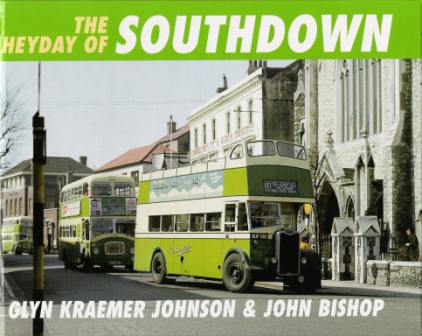
 Lowestoft Corporation Transport
Lowestoft Corporation Transport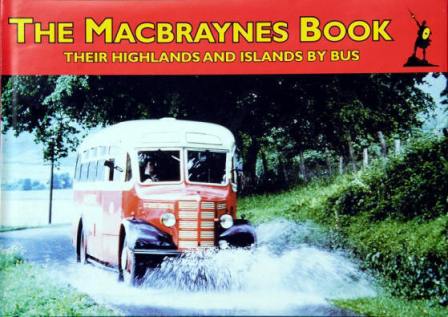 MacBraynes Book, The - Their Highlands
and Islands by Bus.
MacBraynes Book, The - Their Highlands
and Islands by Bus.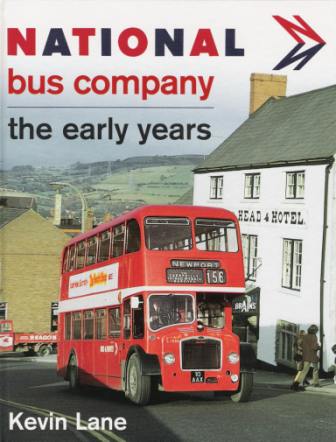
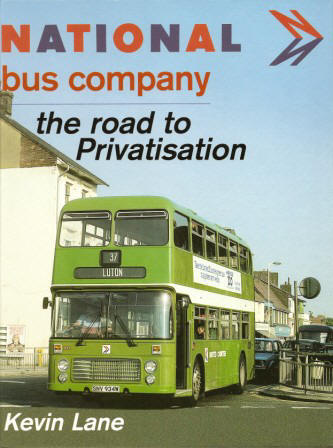
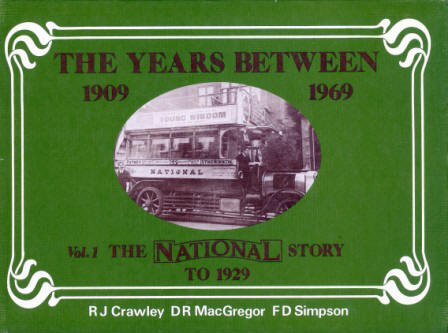 National Story - Volume 1
National Story - Volume 1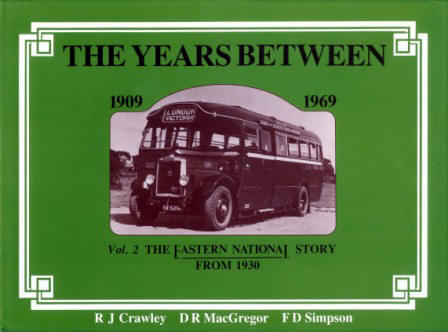 National Story - Volume 2
National Story - Volume 2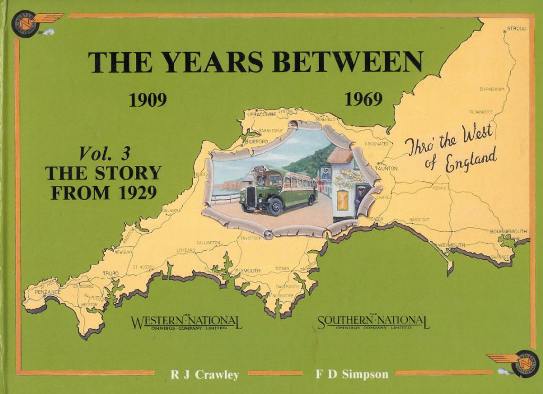 National Story - Volume 3
National Story - Volume 3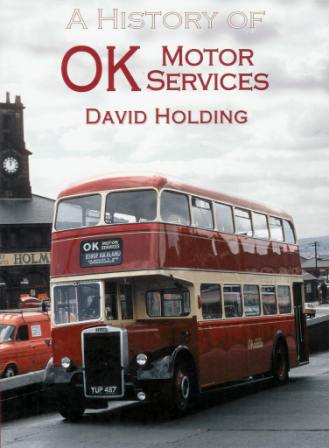
 SMT Buses
SMT Buses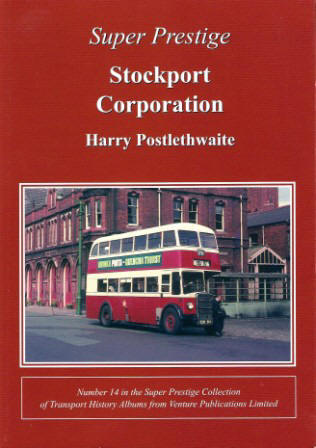
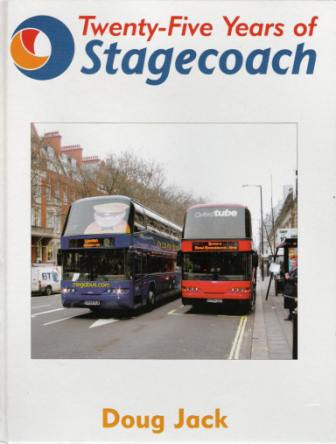
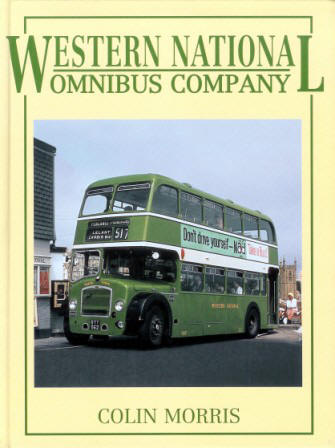 Western National Omnibus Company
Western National Omnibus Company